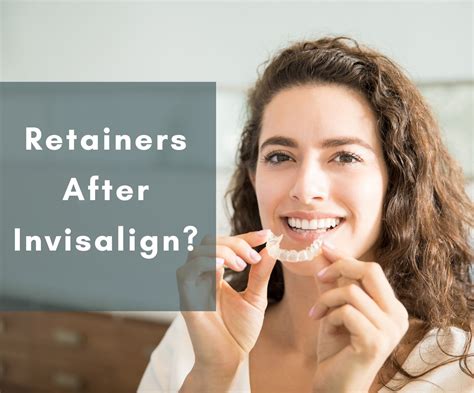Invisalign Retainer: Your Long-Term Smile Insurance
Achieving that perfect, straight smile with Invisalign is a significant accomplishment. But the journey doesn't end once your aligners come off. Maintaining your beautiful, newly straightened teeth requires diligent aftercare, and that's where the Invisalign retainer comes in. Think of your retainer as your long-term smile insurance—a crucial investment protecting your hard-earned results. This comprehensive guide will delve into the importance of Invisalign retainers, addressing common questions and concerns.
What is an Invisalign Retainer?
After completing your Invisalign treatment, your orthodontist will provide you with a retainer, a custom-made appliance designed to hold your teeth in their new, corrected positions. Unlike the clear aligners you wore during treatment, retainers are typically worn for longer periods, often indefinitely, to prevent teeth from shifting back to their original positions. There are two main types:
-
Fixed Retainers: These are thin wires bonded to the back of your teeth, usually on the lower arch. They're virtually invisible and provide constant, passive retention.
-
Removable Retainers: These are similar to Invisalign aligners but are typically made of clear plastic or a combination of plastic and wire. They're removable, allowing for easier cleaning and occasional removal for eating and drinking.
Why is an Invisalign Retainer Necessary?
Your teeth are constantly moving, even after orthodontic treatment. The natural forces within your mouth can gradually shift your teeth back to their pre-treatment positions. Without a retainer, you risk losing the significant time and investment you've made in straightening your teeth. This is especially true for those who have undergone significant tooth movement.
How Long Do I Need to Wear an Invisalign Retainer?
This is a common question, and the answer depends on several factors, including the severity of your initial misalignment and your individual tooth movement tendencies. Your orthodontist will provide personalized recommendations, but generally, you'll need to wear your retainer for a longer period initially (perhaps full-time for several months), gradually transitioning to nighttime wear. In some cases, lifelong retainer use may be recommended, especially for those with more significant corrections. Regular check-ups with your orthodontist are crucial to monitor your teeth and retainer's effectiveness.
What Happens if I Don't Wear My Invisalign Retainer?
Failing to wear your retainer consistently can lead to a relapse, meaning your teeth will gradually shift back to their original positions. This can negate the results of your Invisalign treatment, potentially requiring further orthodontic intervention to correct the relapse. The longer you go without wearing your retainer, the more likely and extensive the relapse could become.
Can I Eat and Drink with My Invisalign Retainer?
This depends on the type of retainer. Fixed retainers are permanently bonded to your teeth and don’t need removal. Removable retainers, however, should be taken out before eating and drinking anything other than water. Food particles and sugary drinks can become trapped between the retainer and your teeth, leading to staining and increased risk of cavities. Always clean your removable retainer thoroughly after each meal.
How Do I Clean My Invisalign Retainer?
Proper cleaning is essential to maintain the hygiene of your retainer and your mouth. For removable retainers, gently brush them with a soft-bristled toothbrush and a non-abrasive toothpaste. You can also soak them in a retainer cleaning solution as directed by your orthodontist. For fixed retainers, you'll need to be extra diligent about brushing and flossing around the wire, ensuring to remove any food particles.
What if My Invisalign Retainer Breaks or Gets Lost?
If your removable retainer breaks or gets lost, contact your orthodontist immediately. They can either repair or replace your retainer. For a fixed retainer, if a wire breaks or comes loose, schedule an appointment with your orthodontist for repair. Delaying repair can lead to further shifting of your teeth.
Is it Possible to Avoid Wearing a Retainer?
While some individuals might be tempted to avoid wearing a retainer, doing so significantly increases the chances of teeth relapse. The retainer is the crucial element ensuring the long-term success of your Invisalign treatment. It's a small price to pay to maintain your beautiful, straight smile.
Your Invisalign retainer is more than just a plastic or wire appliance; it's an investment in the lasting health and aesthetics of your smile. By understanding its importance and following your orthodontist's instructions carefully, you can safeguard your investment and enjoy the benefits of a straight, healthy smile for years to come. Remember, consistency is key!

